
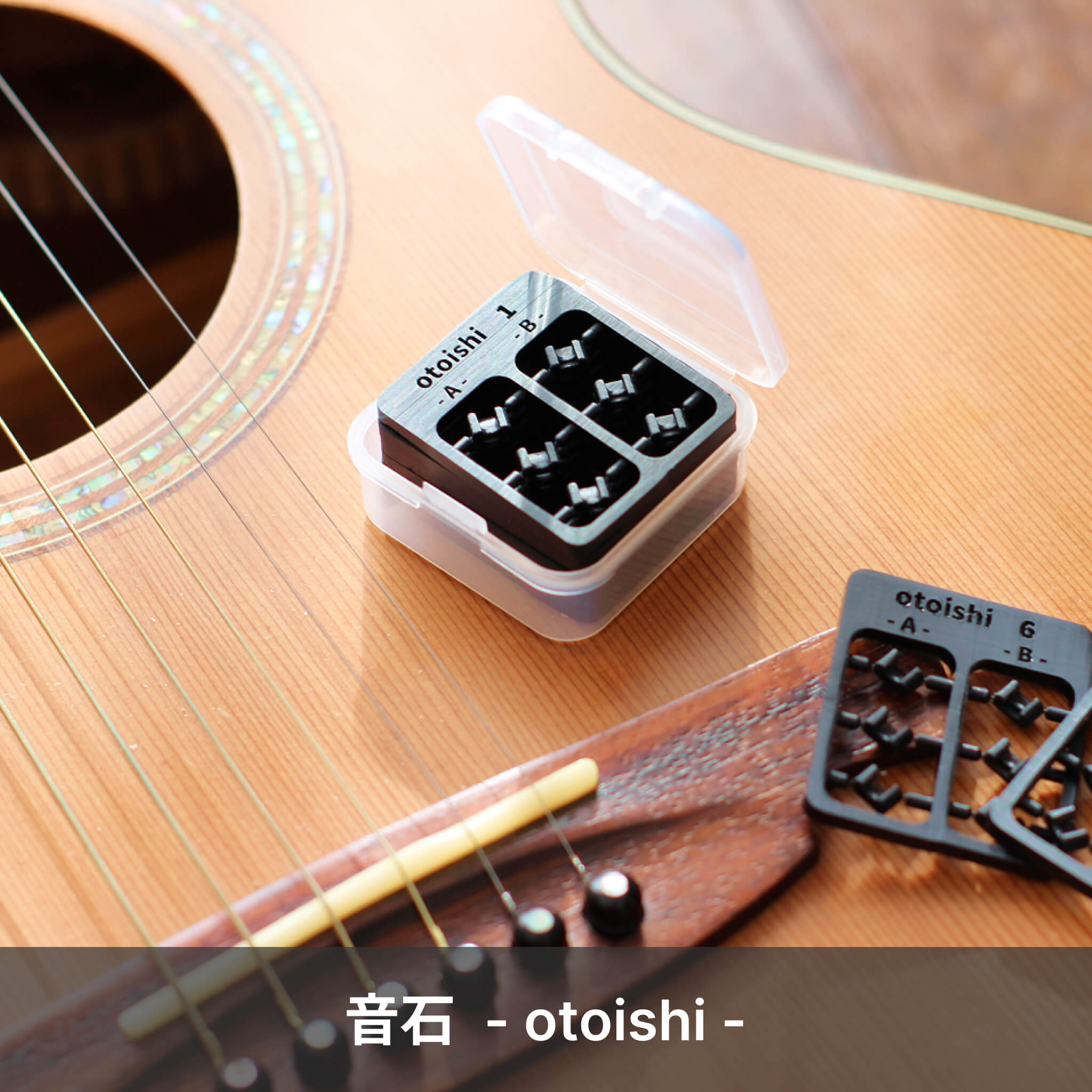
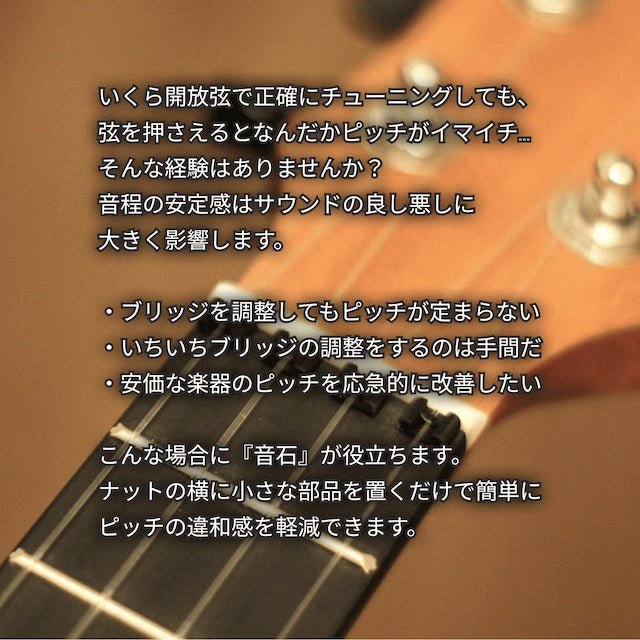
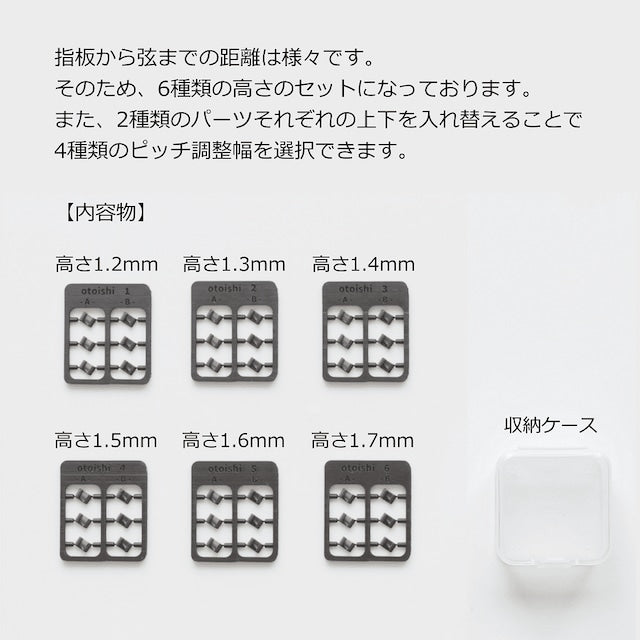
Pitch improvement tool "otoishi" for those who are concerned about fret tone deafness
Tax included.
この商品は、公式直販のみでの販売となっております。楽器店や他の通販サイトでは取り扱っておりません。
なお、安値での販売を装う詐欺サイトにはくれぐれもご注意ください。(詳細はこちら)
Shipping within Japan : 350JPY
If you live outside Japan, please use a proxy purchase service or forwarding service.
> see detail
If you do not feel uncomfortable at this point, there is no need to purchase.
Recommended for those who are worried about the pitch deviation, but want to reduce the discomfort for the time being rather than sending it for repair.
✓ It is troublesome to adjust the bridge one by one.
In such a case, "Otoishi" is useful.
Just by placing a small part next to the nut, you can easily reduce the discomfort of the pitch and enjoy comfortable playing.

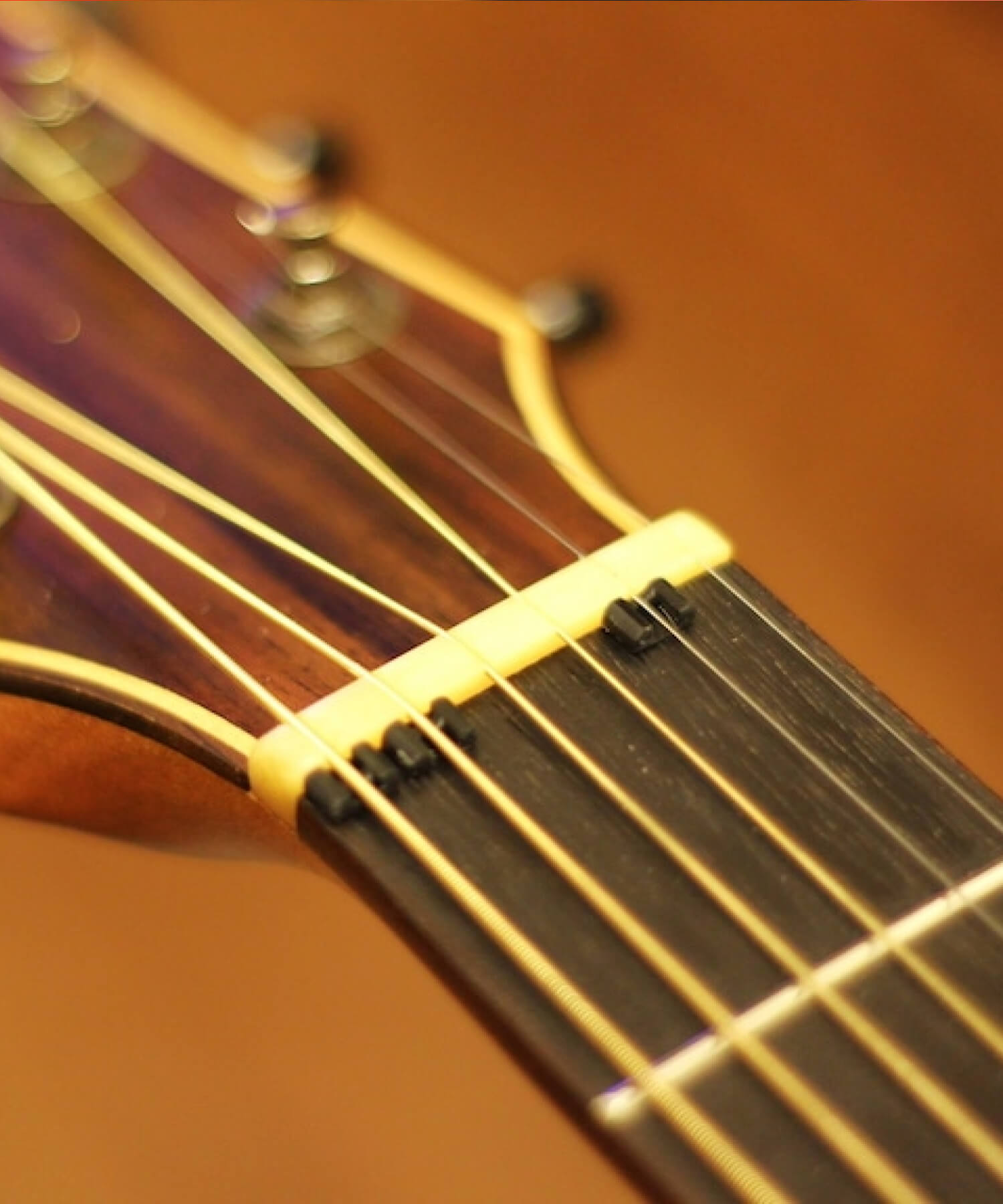
Mechanism of "otoishi"
By simply placing a small part next to the nut, you can adjust the zero fret position of the string where you are concerned about the pitch, and reduce the discomfort of the pitch.
Four levels of adjustment are possible according to the size of the original pitch deviation.

What is the reason for the inconsistency?
Why can't the pitches match perfectly in the first place?
For correct pitch, the nut, frets and bridge saddles must be in the correct position.
However, even if it is in the correct position, the pitch is often out of tune.
In many cases, this is due to the lack of account for the increased string tension when pressed.
In fact, pressing the low position and pressing the mid position have quite a different effect on the string tension.
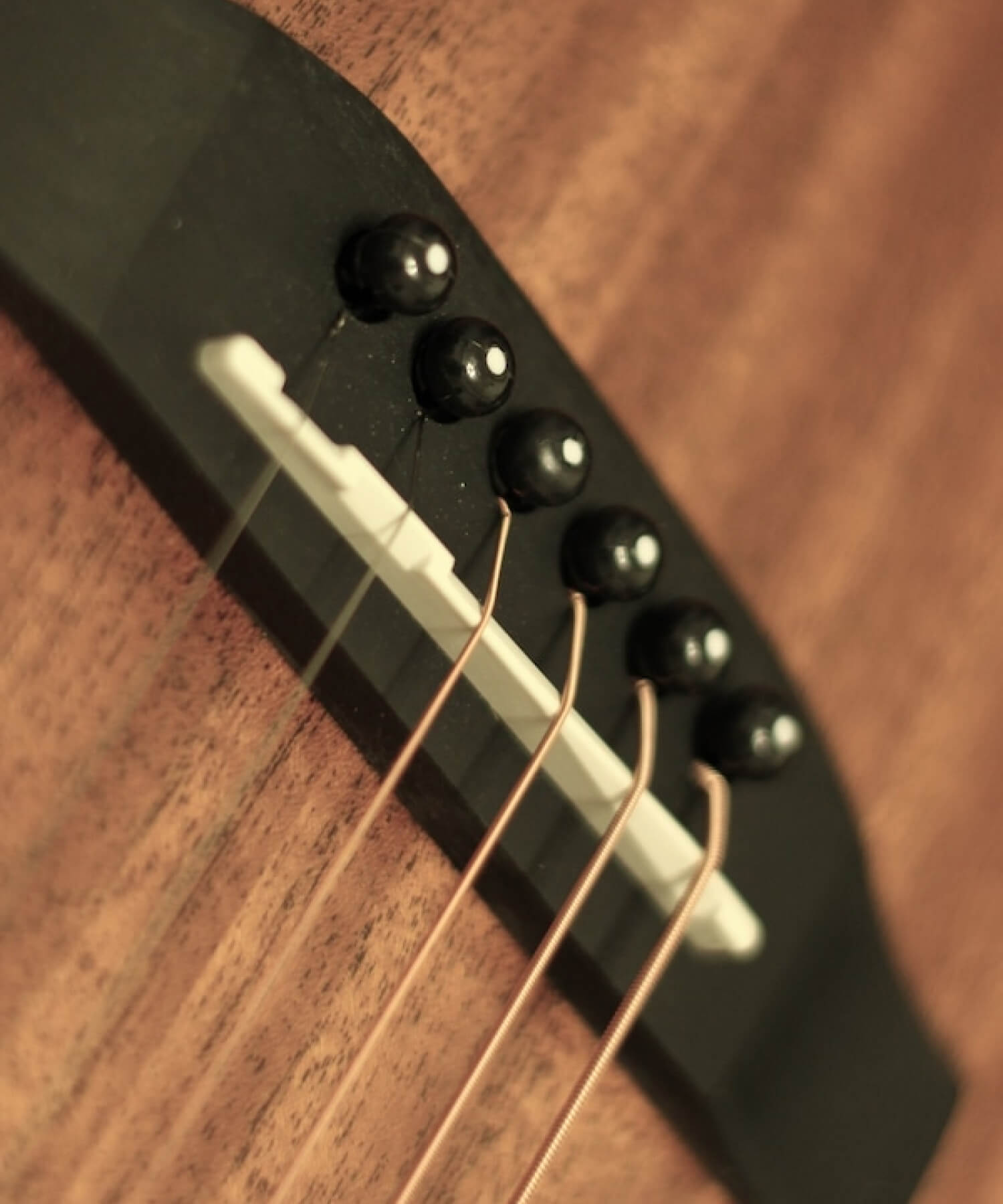
Is adjusting the bridge saddle not enough?
When correcting the pitch, the first thing to check is the position of the bridge saddle.
However, repairing the bridge saddle requires precise work by a craftsman.
The optimum position also differs depending on the type of string and string height. It's not practical to fine-tune the bridge saddles every time you change strings.
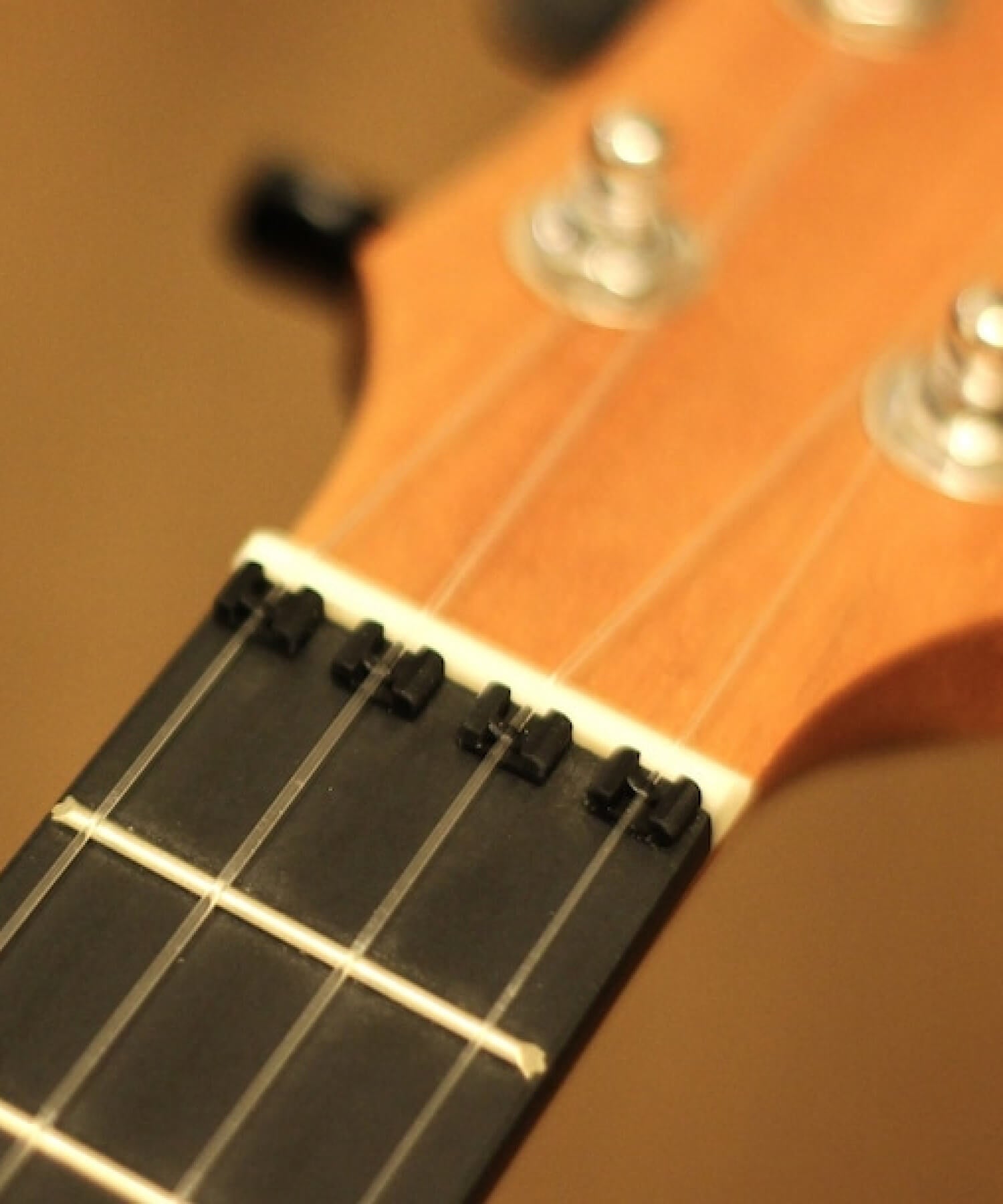
"Otoishi" that reduces discomfort in pitch
That's where "otoishi" comes into play.
・I want to temporarily correct the pitch of my favorite instrument ・I have a pinpoint string that I am concerned about the pitch
If you have such a problem, please try "Otoishi".
Mechanism of "otoishi"
By simply placing a small part next to the nut, you can adjust the zero fret position of the string where you are concerned about the pitch, and reduce the discomfort of the pitch.
Four levels of adjustment are possible according to the size of the original pitch deviation.
What is the reason for the inconsistency?
Why can't the pitches match perfectly in the first place?
For correct pitch, the nut, frets and bridge saddles must be in the correct position.
However, even if it is in the correct position, the pitch is often out of tune.
In many cases, this is due to the lack of account for the increased string tension when pressed.
In fact, pressing the low position and pressing the mid position have quite a different effect on the string tension.
Is adjusting the bridge saddle not enough?
When correcting the pitch, the first thing to check is the position of the bridge saddle.
However, repairing the bridge saddle requires precise work by a craftsman.
The optimum position also differs depending on the type of string and string height. It's not practical to fine-tune the bridge saddles every time you change strings.
"Otoishi" that reduces discomfort in pitch
That's where "otoishi" comes into play.
・I want to temporarily correct the pitch of my favorite instrument ・I have a pinpoint string that I am concerned about the pitch
If you have such a problem, please try "Otoishi".




Questions about this product
What kind of instruments can be used?
Compatible with standard acoustic guitars, classical guitars, and ukuleles.
Compatible with other fretted instruments if the string-to-string spacing is 6mm or more.
*Not compatible with 12-string guitars and basses
What nut height do you support?
Six different height variations, from 1.2mm to 1.7mm in increments of 0.1mm, are available to accommodate various instrument adjustments such as nut height and fret height.
Is there any change in sound?
The shape is optimized to minimize changes to the original sound.
Also, since it is not glued, it can be quickly restored to its original state in the unlikely event that there is something wrong with the tone.
Does it come off during performance?
Depending on the combination of string height and parts, it may occasionally shift during strong strokes.
In that case, please try parts that are 0.1mm higher.
Please teach me how to use it
Please check "How to use Otoishi" at the bottom of this page.
To customers who use
How to use Otoishi
I will explain how to use the sound stones in order.
Please use the following as a reference when you receive the product.
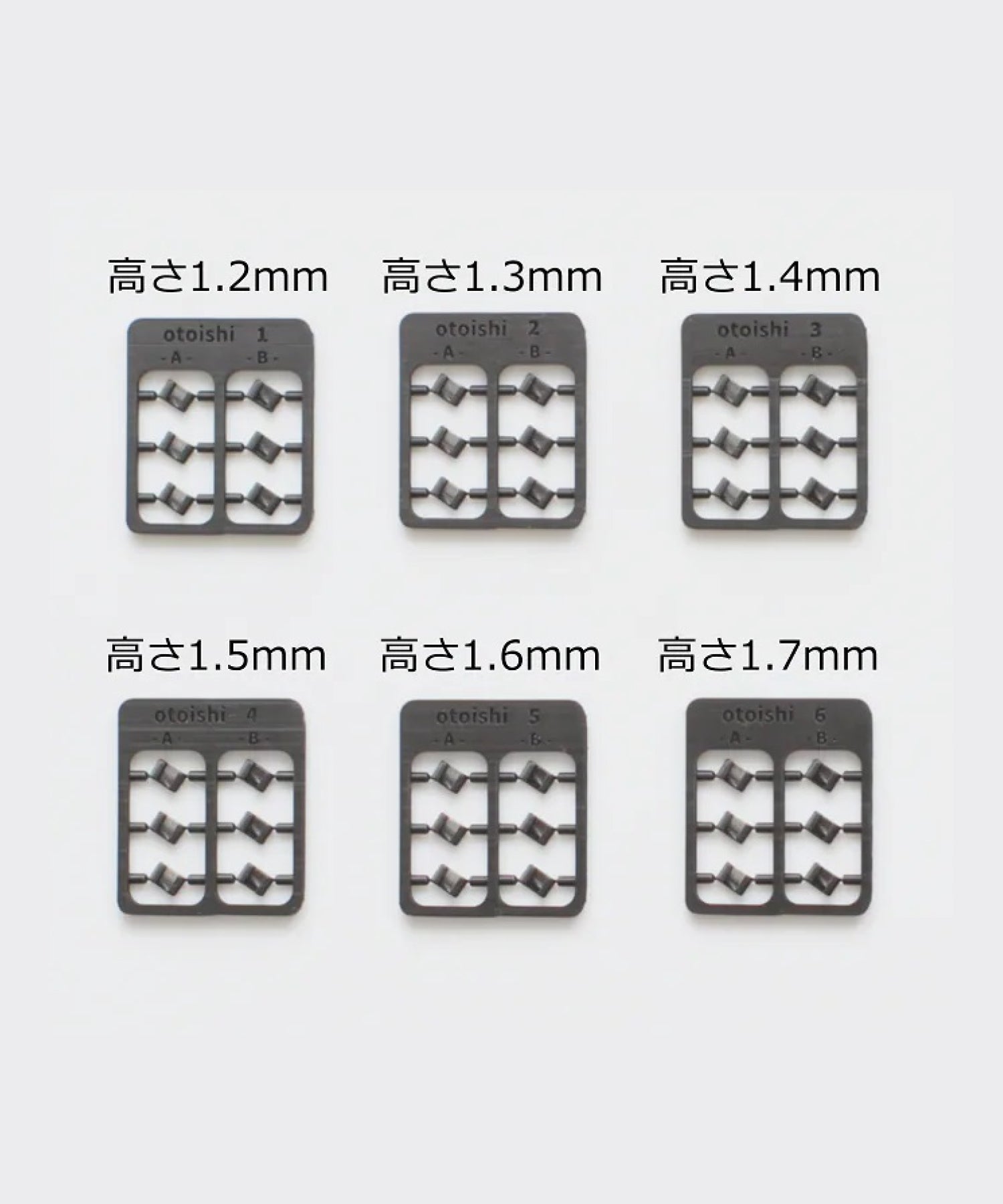
▼ Basic explanation
A total of 12 types (6 types of height, 2 types of shape) parts are included in 3 each.
■ Height
A number engraved next to the logo indicates the height. You can choose from 1.2mm to 1.7mm in numerical order in 0.1mm increments.
■ Shape
There are 2 types of shapes. Since the adjustment width can be changed by turning each upside down, there are 4 types of adjustment widths to choose from.
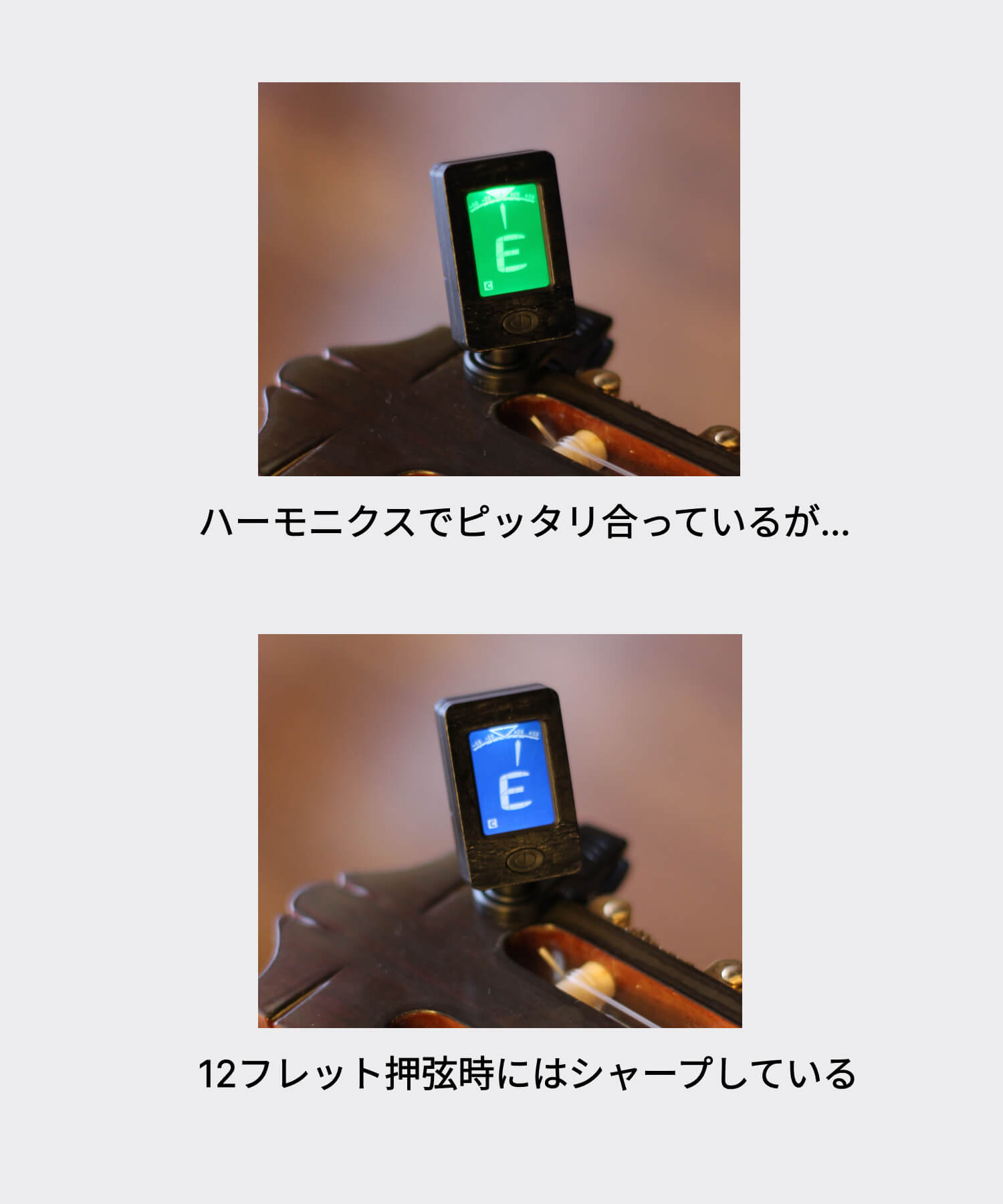
▼ Pitch confirmation
First, let's check if the octave pitch is correct.
step 1:
Attach the tuner to your instrument and tune the harmonic on the 6th string, 12th fret.
step 2:
Now let's check the pitch when pressing the 12th fret.
Check all strings in the same way. If it fits perfectly, it's OK, but if it's misaligned, remember which string is misaligned.
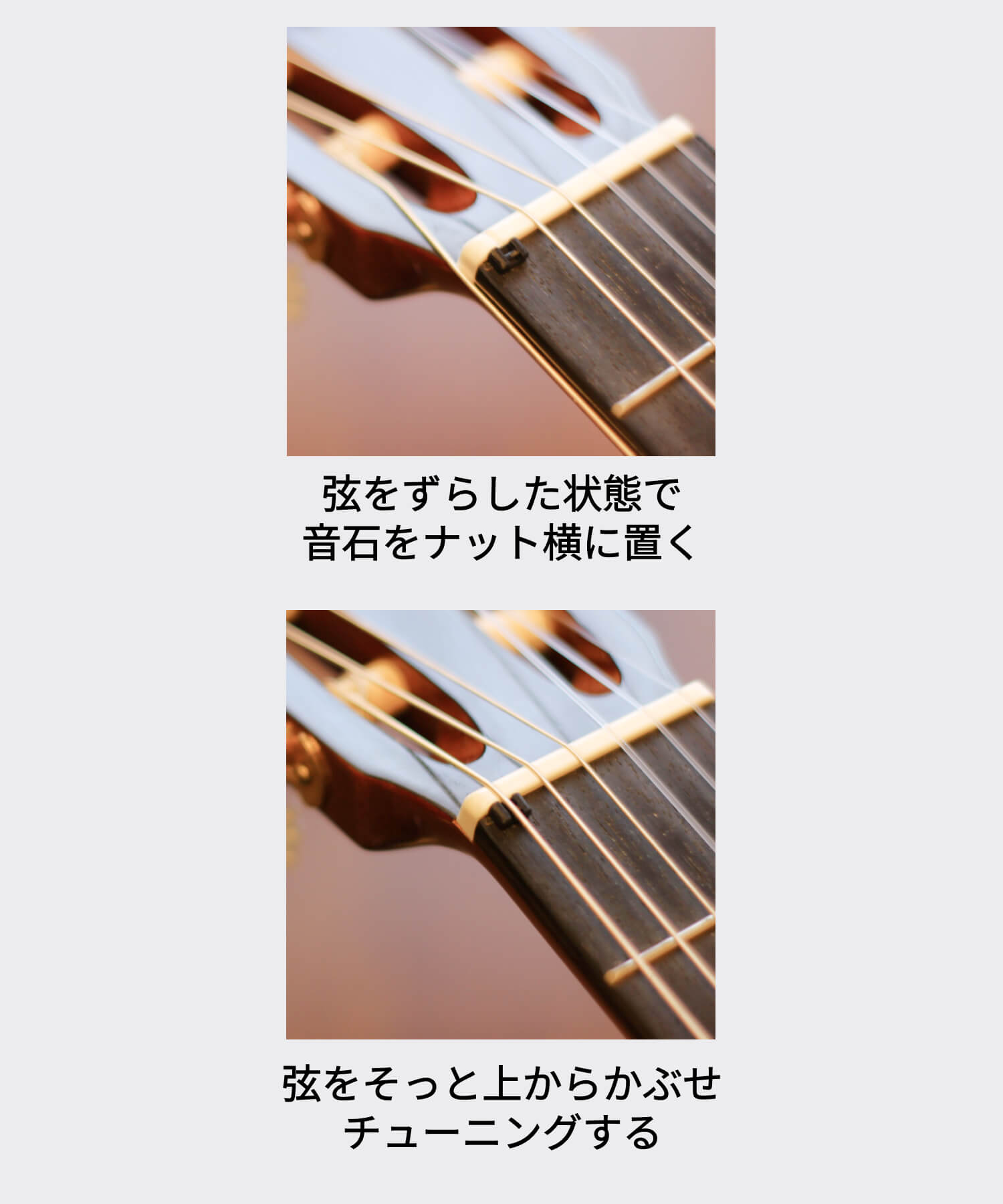
▼ Confirmation of height
Let's try number 3 first.
Loosen and shift the target string, place the part next to the nut, gently cover the string from above and tighten the peg.
Once you've got a rough tune, let's check the height first.
If the sound stone is firmly fixed and the string height is comfortable, it is OK.
If the sound is buzzing, try increasing the height level by one.
Find the perfect tone stone for your instrument.
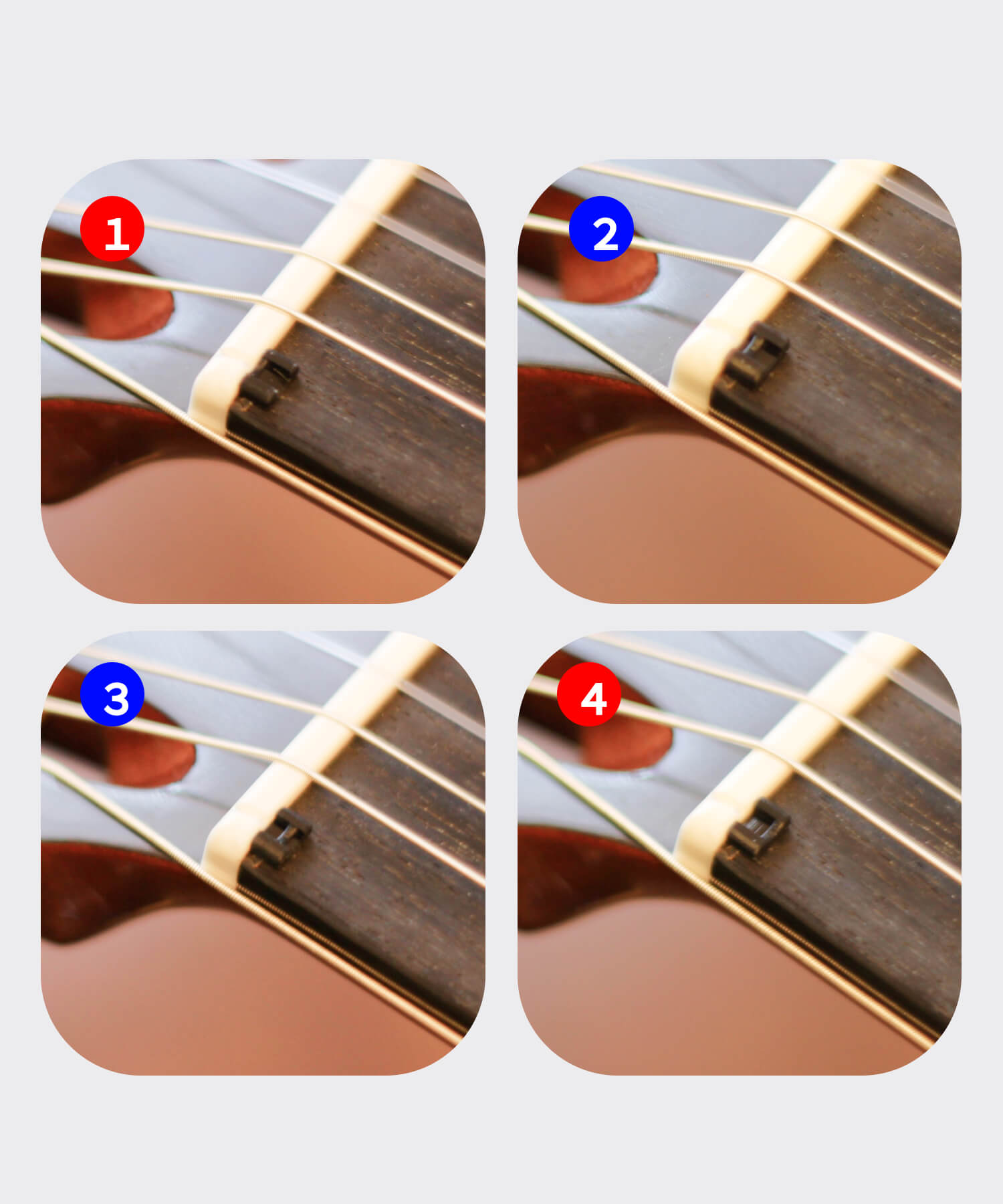
▼ Checking the pitch adjustment range
Next, let's check the pitch adjustment range.
The further the projection of the part that touches the string is from the nut, the greater the adjustment range.
By using A, B, and 2 types of parts while changing the direction, 4 levels of adjustment variations are created as shown in the image.
Select the sound stone so that the adjustment range is just right.
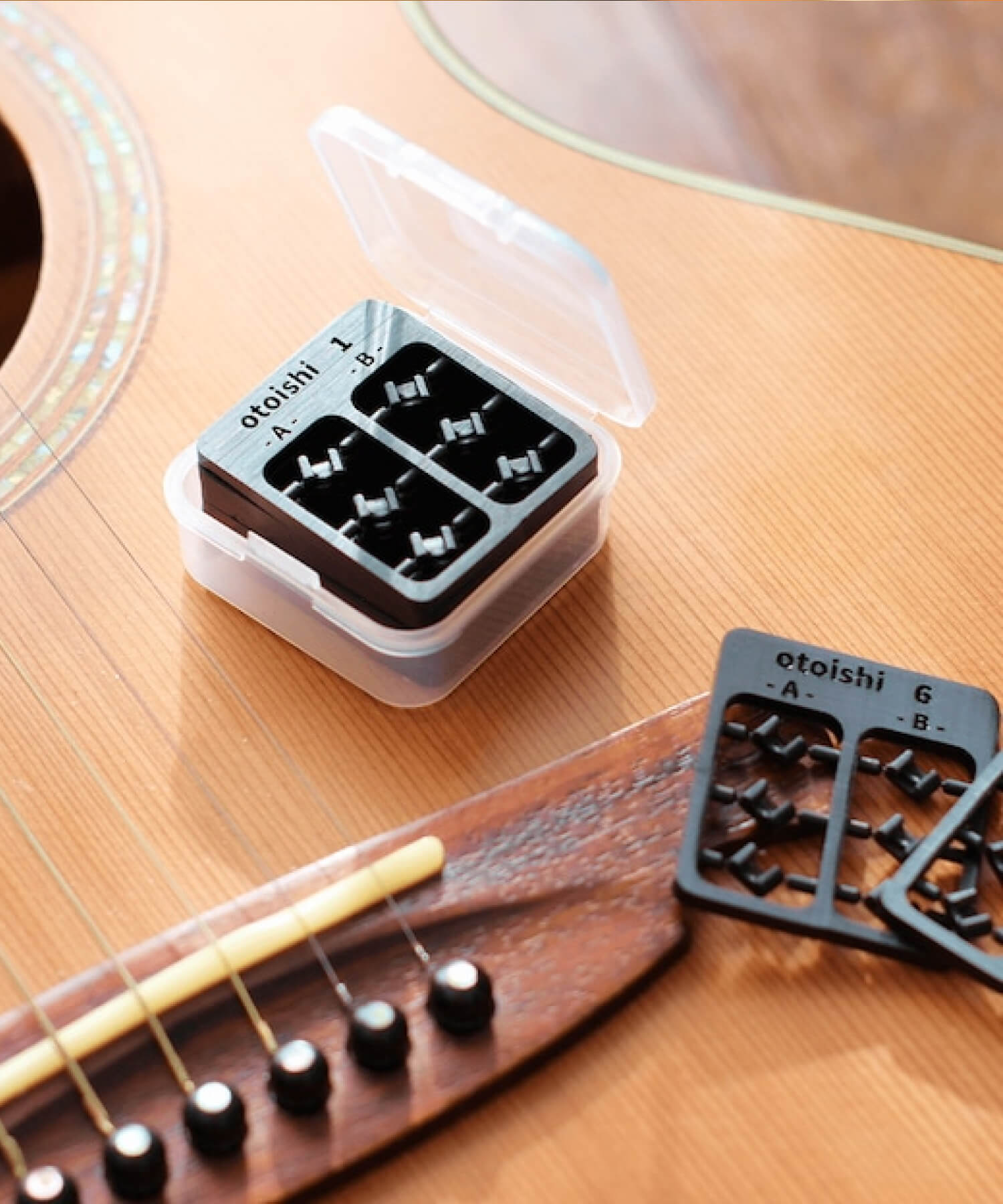
Other points
Originally, it is better to have the bridge and nut adjusted by a professional.
Otoishi is a tool that "improves the pitch without any hassle".
If the original deviation is small, you can reduce the discomfort of the pitch by using tone stones.
However, if the original discrepancy is too large, it is better not to try to perfect the pitch with tonestones alone.
This is because if the error in the position of the bridge saddle or the fret position is too large, the pitch will collapse somewhere even if you adjust only the nut position with Otoishi.
However, for the time being, I want to minimize the discomfort of the pitch.
For a comfortable performance, I hope you will make good use of Otoishi.
(From development staff)
▼ Basic explanation
A total of 12 types (6 types of height, 2 types of shape) parts are included in 3 each.
■ Height
A number engraved next to the logo indicates the height. You can choose from 1.2mm to 1.7mm in numerical order in 0.1mm increments.
■ Shape
There are 2 types of shapes. Since the adjustment width can be changed by turning each upside down, there are 4 types of adjustment widths to choose from.
▼ Pitch confirmation
First, let's check if the octave pitch is correct.
step 1:
Attach the tuner to your instrument and tune the harmonic on the 6th string, 12th fret.
step 2:
Now let's check the pitch when pressing the 12th fret.
Check all strings in the same way. If it fits perfectly, it's OK, but if it's misaligned, remember which string is misaligned.
▼ Confirmation of height
Let's try number 3 first.
Loosen and shift the target string, place the part next to the nut, gently cover the string from above and tighten the peg.
Once you've got a rough tune, let's check the height first.
If the sound stone is firmly fixed and the string height is comfortable, it is OK.
If the sound is buzzing, try increasing the height level by one.
Find the perfect tone stone for your instrument.
▼ Checking the pitch adjustment range
Next, let's check the pitch adjustment range.
The further the projection of the part that touches the string is from the nut, the greater the adjustment range.
By using A, B, and 2 types of parts while changing the direction, 4 levels of adjustment variations are created as shown in the image.
Select the sound stone so that the adjustment range is just right.
Other points
Originally, it is better to have the bridge and nut adjusted by a professional.
Otoishi is a tool that "improves the pitch without any hassle".
If the original deviation is small, you can reduce the discomfort of the pitch by using tone stones.
However, if the original discrepancy is too large, it is better not to try to perfect the pitch with tonestones alone.
This is because if the error in the position of the bridge saddle or the fret position is too large, the pitch will collapse somewhere even if you adjust only the nut position with Otoishi.
However, for the time being, I want to minimize the discomfort of the pitch.
For a comfortable performance, I hope you will make good use of Otoishi.
(From development staff)




